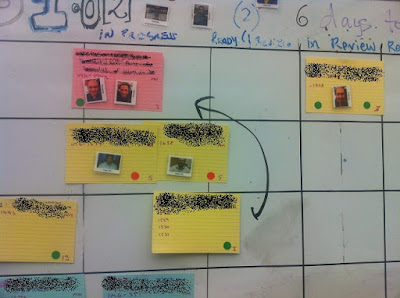Skillus interruptus, being interrupted and loving it...a key skill for agile people
At work today, we had a series of case studies delivered on UX and agile. The premise of the morning was to discover whether UX people could work within the dynamic agile team environment. Lots of good stuff in there, but one thing really stood out. Tref, one of our UX team and an Aconex stalwart offered this gem. I'm going to paraphrase him here as I cant quite remember word for word: "To really work well within a small team, one needs to be collaborative, to be collaborative, one needs to deal with and actually like constant interruptions." This is so true, in small collaborative teams, interruptions are a constant, as you share and seek advice from team mates. Of course a key part of skillus interruptus was knowing when, and how to interrupt others. The ability to switch focus but stay calm is tricky, some people hate it and I've seen them crack under just this pressure. Retro notes are littered with "Constant Interruptions" in the "what didn't w...



